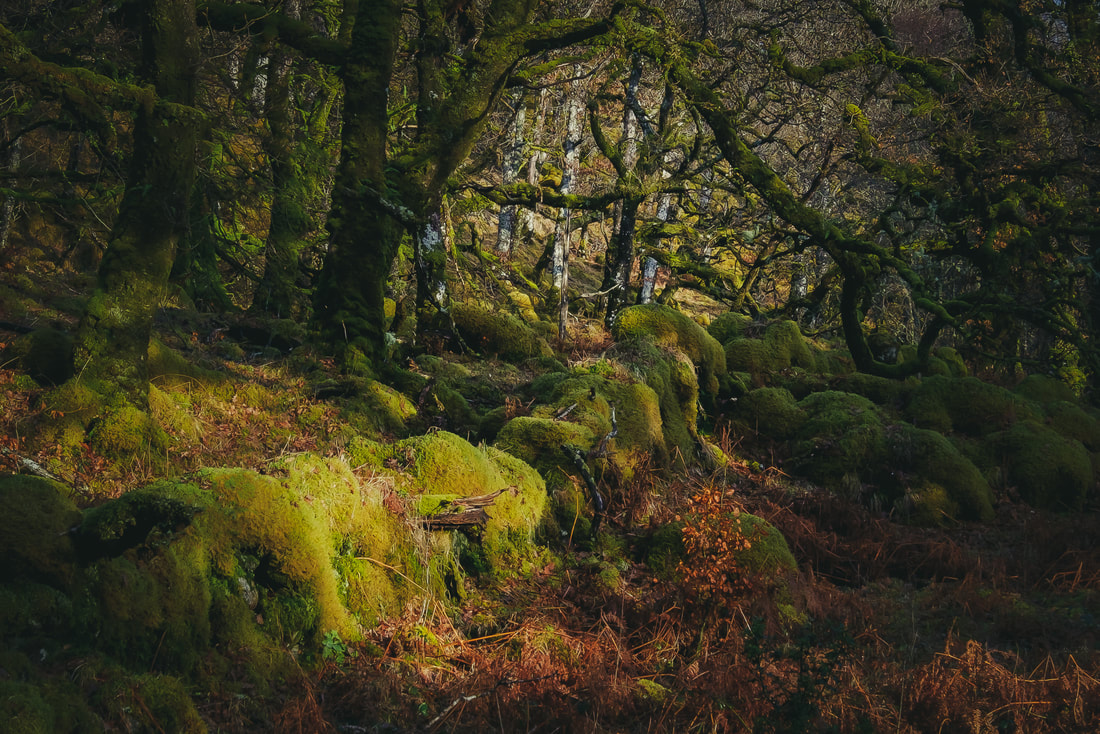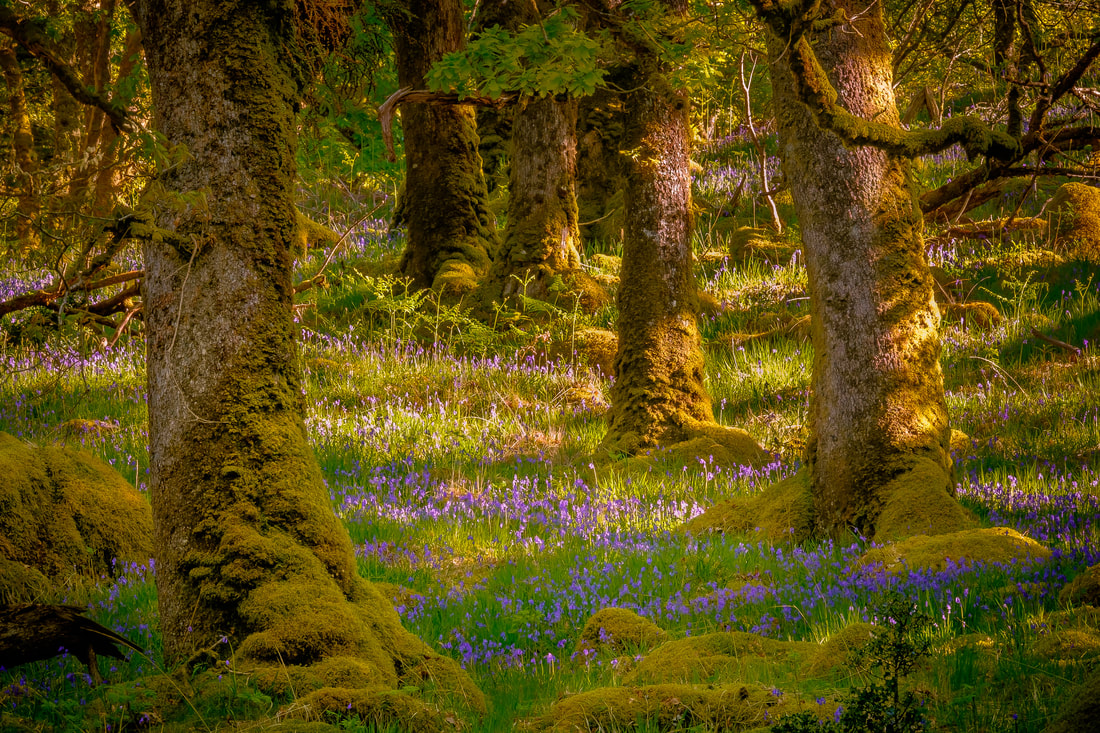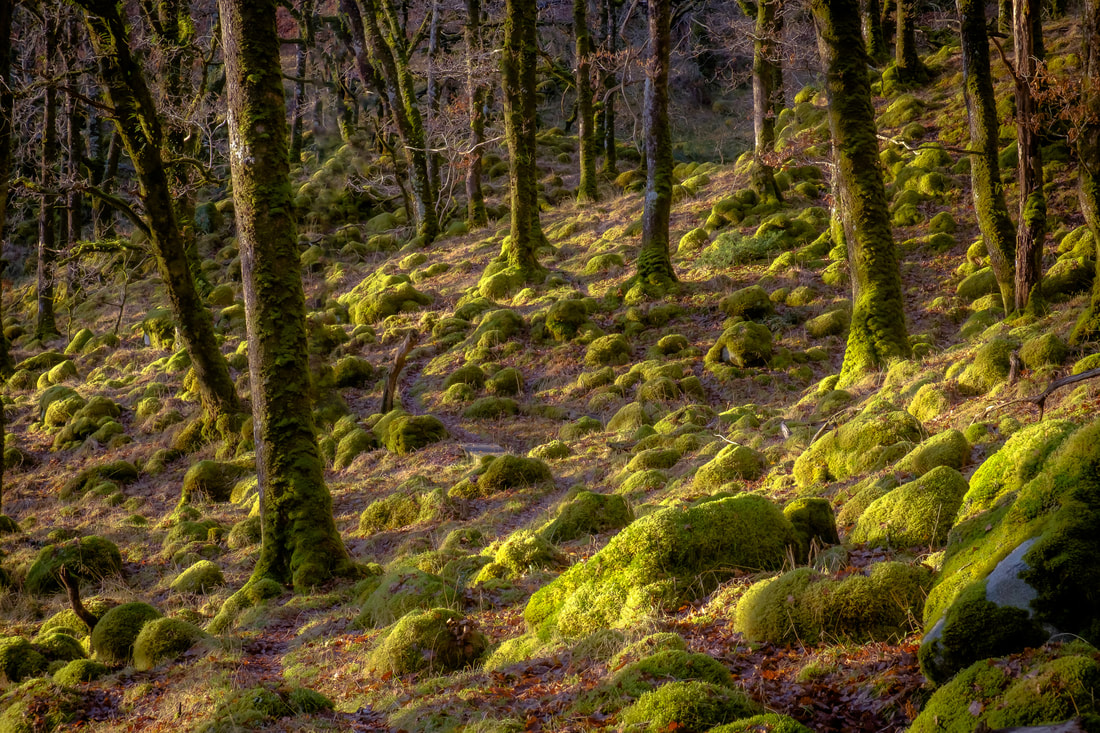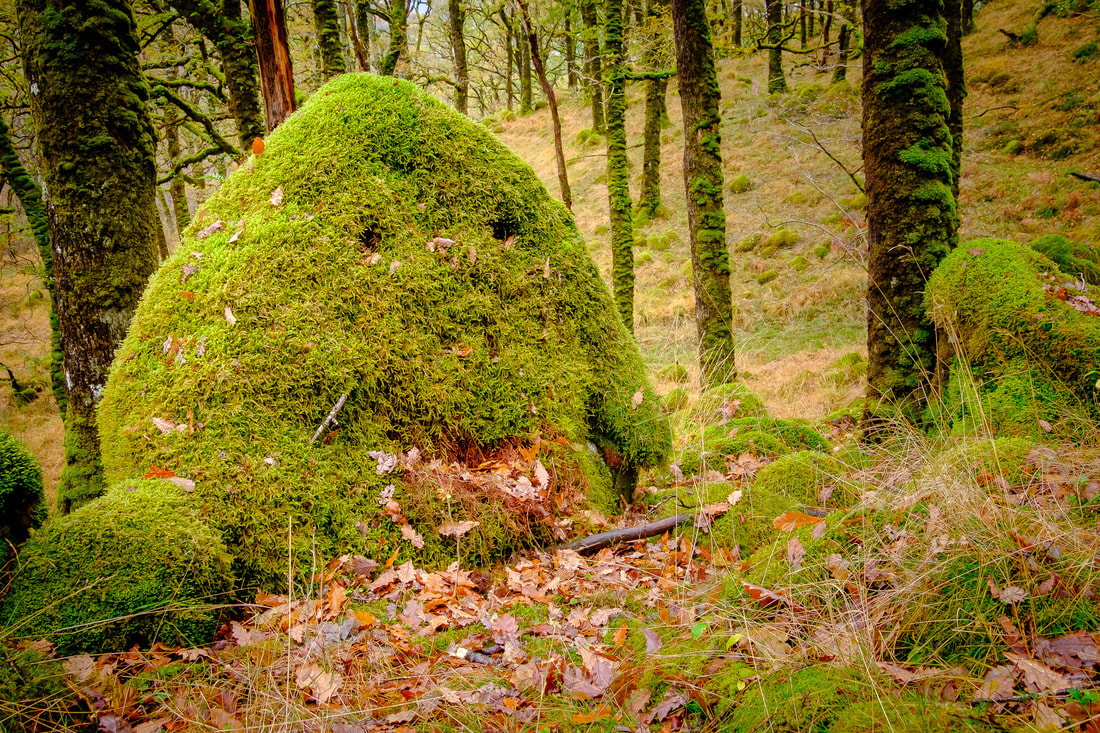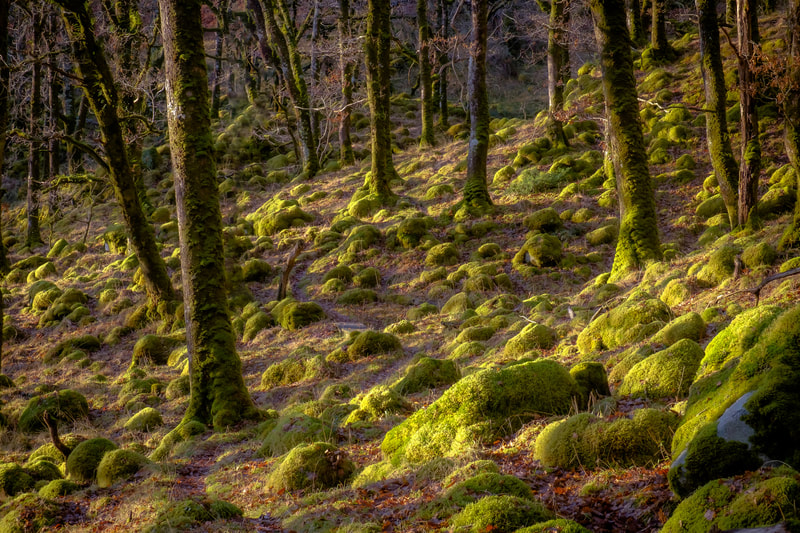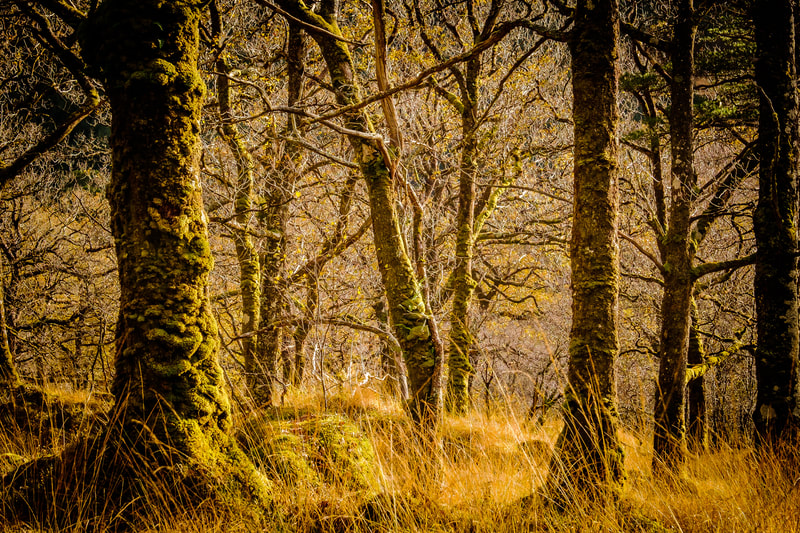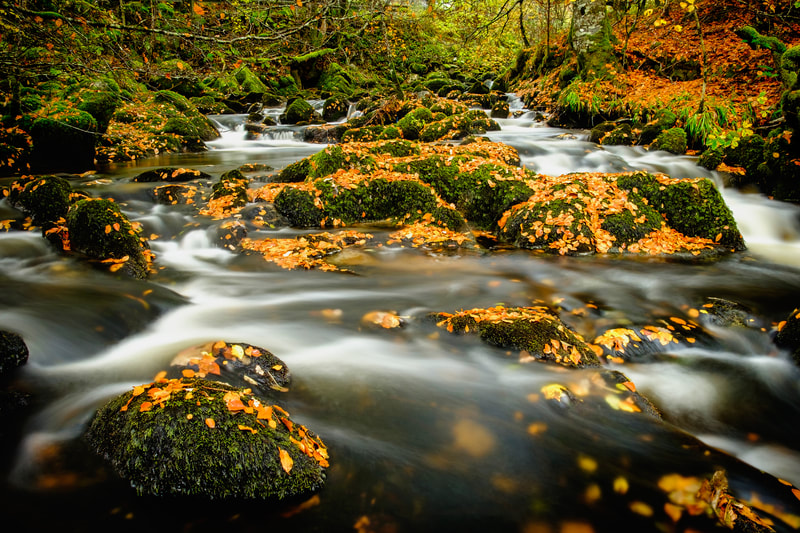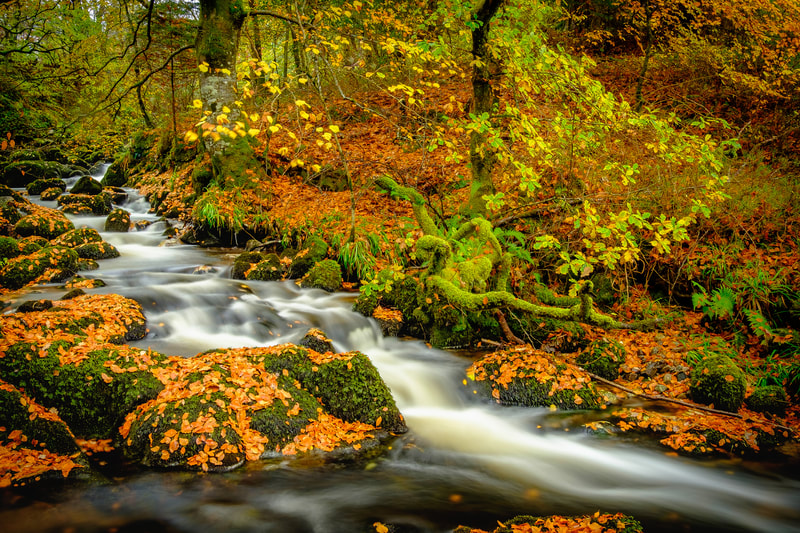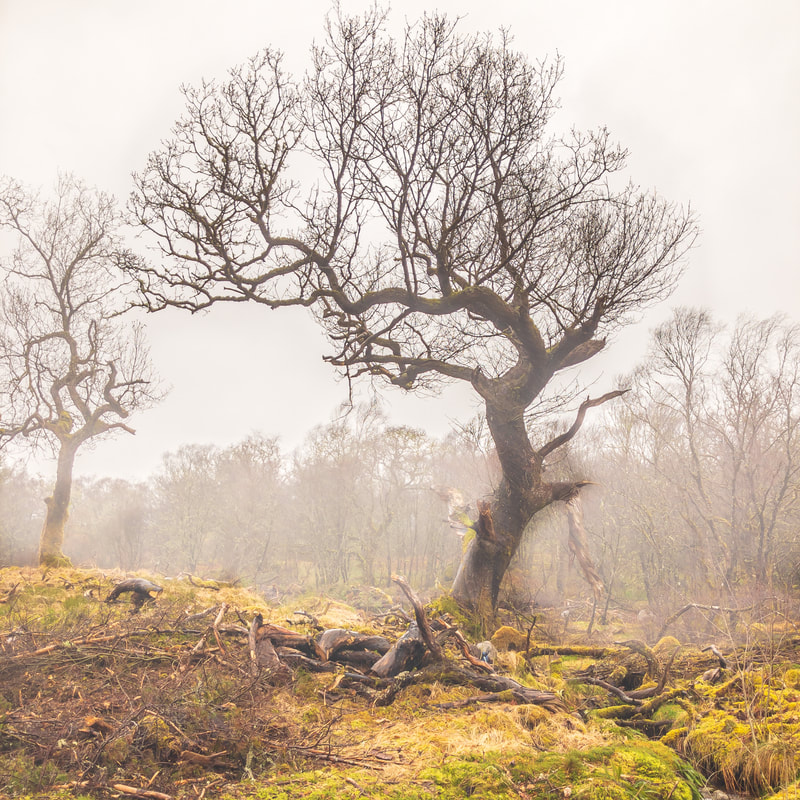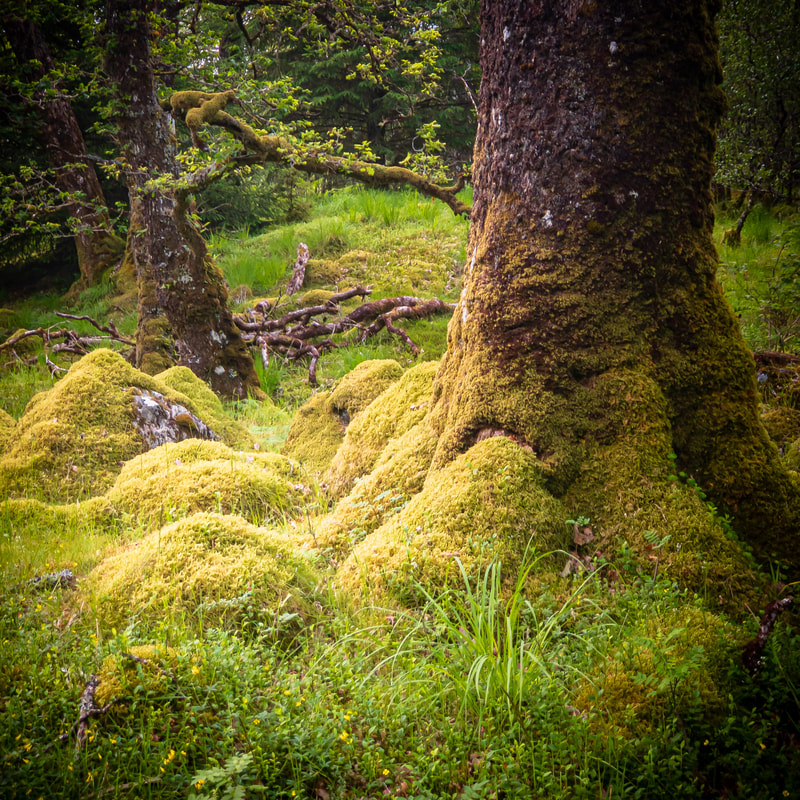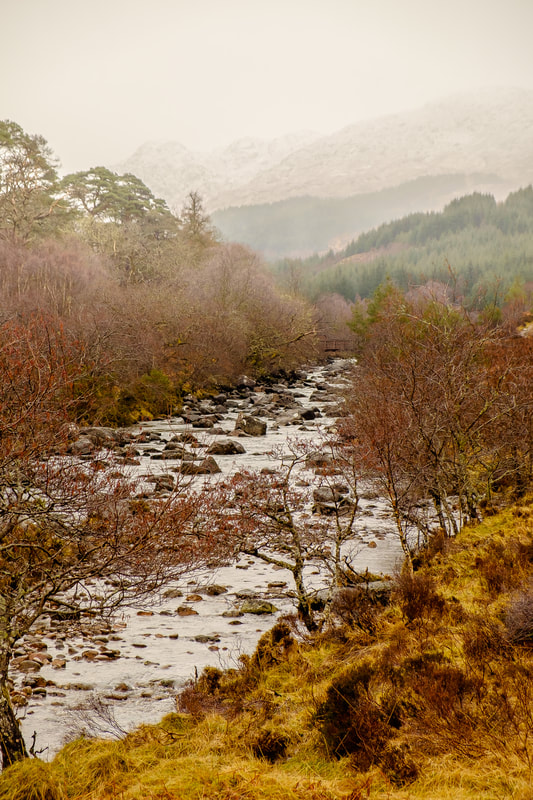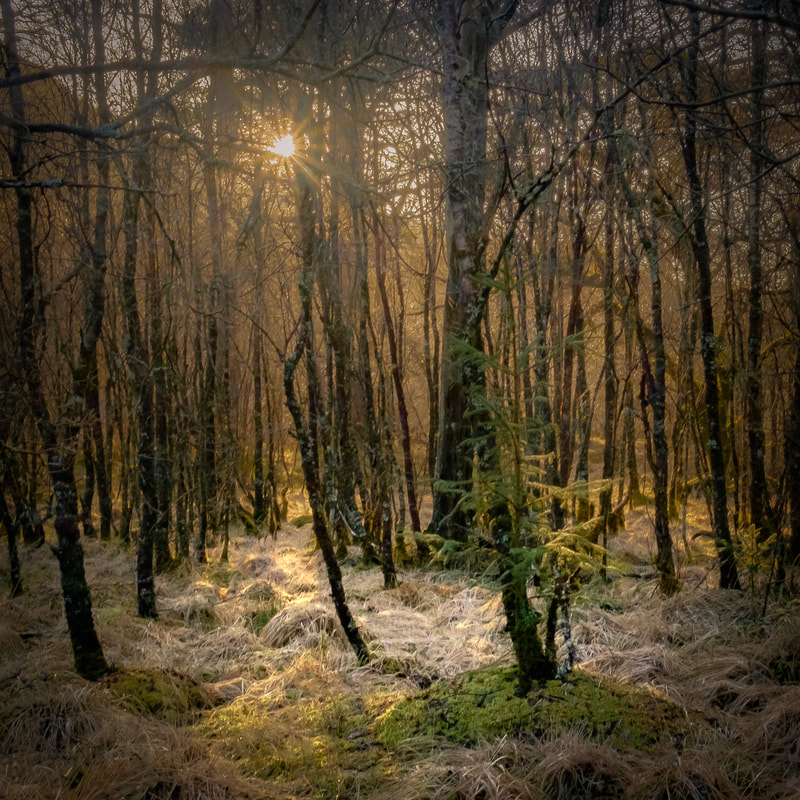|
Have you ever found yourself wandering in a place where you feel as if you are walking a fine line between this world and another? I ask because it is a feeling I often have when walking among the ancient oaks and between the moss-covered boulders of Ariundle Oakwood. I don’t know what it is about the place, but I feel that I am never too far away from the mystical realm inhabited by the faeries that gives the nearby village of Strontian or Sròn an t-Sìthein (nose of the fairy hill) its name. In my mind, it is one of the “thin places” that can be found here on the Peninsula. The concept of “thin places” has been woven into the tapestry of Celtic folklore and spirituality for centuries, being used to describe places where the boundary between the physical world and a mystical, historical or spiritual world is believed to be exceptionally thin, thus facilitating a sense of connection between the two.
In thin places, you might feel a sense of awe and heightened awareness of being in the presence of something greater than yourself and, as such, they are often characterised by an otherworldly atmosphere, where the ordinary and the extraordinary intermingle. This is certainly something I can say about Ariundle Oakwood, a place where each ancient tree and each moss-covered boulder seems to harbour mystical beings waiting to be unveiled. When you stand in a thin place you may instead find your imagination ignited by thoughts of what has been before you. This historical imagination can transport you to a different era, picturing scenes from the past as if they were unfolding right before your eyes. Camas nan Geall is a place where I get this feeling. This “Bay of the Strangers” is a fascinating place because it contains evidence of human presence that covers a period of several millennia of human history. This ranges from a Neolithic chambered cairn to deserted clearance dwellings and includes a number of things in-between. The chambered cairn in the centre of the bay may seem quite innocuous, but when you stand next to it and consider that people buried their dead there some 5000-6000 years before, you cannot help but feel a sense of what has gone before. Perhaps more poignant though, are the ruins of Torr na Mòine up on the slopes of Ben Hiant which was the settlement that was the home to the people of Camas Nan Geall before they were forcibly evicted in the 18th century so that the land could be used for a sheep farm. It’s hard to comprehend the hardship and trauma that these people suffered from being suddenly cleared from their ancestral lands by the landowner for primarily economic reasons. Finally, the Old Parish Church in Kilchoan is a place where I feel that there is a thin veil between our physical world and the spiritual world. It is a hauntingly peaceful place that seems to compel you to tread carefully and with due deference to ground that has played host to a place of worship from some 700 years. Giving Kilchoan its name, this Church of St Comghan must have been incredibly important to the local community as a place where they could come together not only to worship but to also seek fellowship and support. Indeed, a walk around the graveyard that surrounds the church to look at gravestones that date from as far back as the 14th century and as recent as the 1990’s, pays testament to just how long this “thin place” has provided spiritual succour to the community. There are many other places on the Peninsula to which I have felt a sense of the mystical, historical or spiritual and this most likely stems from my photography encouraging me to slow down and take time to get a real sense of a place before I ever think of pressing the shutter button. However, you don’t need a camera to experience the profound ways in which certain locations can inspire feelings of connectivity to a different realm. You can just slow down, look, listen and feel when you next find yourself in a place that you sense you might be connected to.
10 Comments
We are now in May, the last month of Spring and the landscape has well and truly awakened from its winter slumber. The leaves have unfurled on the trees, the wildlife is thriving, and the colourful blooms have appeared. We’ve seen snowdrops in February, wood anemones in March, primroses in April and now it’s time for the carpets of bluebells to appear in the ancient woodlands across the Peninsula. This wildflower spectacle is a magical sight and one that leaves you with a feeling that these woodlands with carpets of blue are indeed enchanted. In Celtic folklore, bluebells have a strong association with spirits and faeries. They are often called faerie flowers and their small bell-shaped flowers are believed summon the faeries when rung. This is not necessarily a good thing because faeries are believed to hang their spells on the bluebells to dry and disturbing them may unleash wild magic upon you, leaving you dazed by enchantment and unable to find your way out of the woods. It can be even more serious for children who pick bluebells because it is believed that they could be snatched away by the faerie folk, never to be seen again.
So, if you do visit a bluebell wood, just remember to stay on the path and to not pick or disturb any of the flowers. Besides risking the wrath of the faeries, another good reason to avoid disturbing them is that they are poisonous, and this might be the reason why there are so many old tales and legends warning people away from them. However, these beautiful little flowers have also been valued for their useful properties and have been used over the centuries by herbalists to prevent nightmares and to treat leprosy, spider bites and tuberculosis. They contain at least 15 biologically active compounds that provide them with protection against insect and animal pests and in recent years, some of these compounds have been investigated as possible treatments for HIV infection and cancer. Bluebells have practical uses as well. They produce an exceptionally sticky sap which was used by our Bronze Age ancestors to make a glue that they use for attaching flights of feathers to their arrows. This glue has also been used for several centuries by bookbinders to make and repair books, while in Tudor times, starch was extracted from crushed bluebell roots and used to stiffen the ruff collars that were very much the fashion back then. Finally, some bluebell folklore gives a positive impression of this beautiful little flower. For example, some believe that by wearing a wreath made of the flowers, the wearer can be compelled to speak only truth while others believe that if you can turn one of the flowers inside out without tearing it, you will eventually win the one you love. I took the following photograph on a late winter afternoon as light fell on some of the hundreds of moss-covered boulders that lie amongst the trees in Ariundle Oakwood near Strontian and couldn’t help being reminded of the faerie mounds where the sídhe are said to live. Read on to find out more about these mythological creatures…. What’s in a Name? If you take a walk through Ariundle Oakwood, you’ll see a woodland floor covered with hundreds of moss-covered boulders which, with a little bit of imagination, could be mistaken for mounds that are home to the mythological sídhe, a supernatural race comparable to the faeries or elves. Indeed, the nearby village of Strontian got its name because of the faeries. In Scottish Gaelic, it is called Sròn an t-Sìthein, which translates as the ‘nose of the fairy hill’ and means a knoll or low round hill inhabited by the sídhe.
Going back to Strontian, or Sròn an t-Sìthein, the term sìthein (pronounced shee-an) often referred to small conical hills with hollow interiors containing an invisible world within which it was believed that faeries coexisted with the world of humans. They were thought to have had a huge influence on how successful the annual harvest would be and if a crop failed it was sometimes thought that someone had violated or upset them. So, before you decide to go walking in the fields or forests by yourself, it is perhaps best if you know a little bit about the various faeries, their significance and how not to upset them. Respect, Honesty and No Green Most important of all is to never let a faerie overhear you calling them faeries as they do not like this. They prefer to be called ‘fair folk’ and are very sensitive creatures, so do not be rude, or you might suffer the consequences. Also, you should always be honest with a faerie as they will know if you have lied to them, and not surprisingly, they don’t take kindly to that either. Finally, wearing the colour ‘green’, is also not advisable, as faeries see this as a colour that belongs to them. There are many different kinds of fairies. Some take on human form, some take the form of creatures, some can fly, and all can appear and disappear at will. Some will fool you with comical antics, some will lure you with beauty and some will just plainly let you know how they feel about a human intrusion. Coming across ‘fair folk’ like Buachailleen, Brownies, Gnomes, the Gruagach, Heather Pixies, Pixies and Seelie Courts can be a very rewarding and magical experience, as most of these faeries enjoy being mischievous, shy and friendly. The same cannot be said for the Ghillie Dhu, Kelpies, Nucklelavees or Fachans. Most of these faeries dislike humans intensely and an encounter with one of them folk could end badly for you. In particular, make sure you avoid the Black Angus or Cù-sìth, which means "faery dog". If this large black dog with yellow eyes and sharp fangs shows itself to you, the legend says that you will die in a fortnight. Belief in the ‘fair folk’ continues to this day, with stories being told in the early twentieth century of unwary humans being lured inside the sìthein at night, only to emerge the following morning and discover that decades had passed in the outside world. Other tales detail the abduction of unbaptised babies, or doomed romances with the fairy folk, and the various ills which befell those who dared to refuse them hospitality. Even as recently as January this year (2020), plans for a fish farm in Loch Pooltiel off the north-west coast of Skye were rejected after campaigners warned that fishermen could be lured to their deaths by Ashrays. Also known as Asrais, these faeries are completely translucent water creatures and are often mistaken for sea ghosts. A group of campaigners called Friends of the Eilean Fhlodaigearraidh Faeries warned that workers' lives could be put at risk by the creatures, who could 'lure them with promises of gold and jewels into the deepest part of the ocean'. It’s not all bad though, because as long as you respect the faeries and stick to the rules how not to upset them, then you should be safe on your walk through the oakwoods. Remember to call them ‘fair folk’, do not be rude or dishonest and finally, don’t wear green. Images of SunartYou will find other images of Ariundle Oakwood and the wider area of Sunart in the Images of Sunart gallery on this website. If you’d like a print of any one of them, please feel free to get in touch. Also get in touch if you’d like to arrange some photography tuition.
|
AuthorHi, Archives
July 2024
Categories
All
|
Steven Marshall Photography, Rockpool House, Resipole, Strontian, Acharacle, PH36 4HX
Telephone: 01967 431 335 | Mobile: 07585 910 058 | Email: [email protected]
Telephone: 01967 431 335 | Mobile: 07585 910 058 | Email: [email protected]
All Images & Text Copyright © 2024 - Steven Marshall - All Rights Reserved

